Abstract
1. A method is described for altering the pressure across the wall of the carotid sinus in conscious rabbits by enclosing the carotid bifurcation in a rigid, fluid-filled capsule. The extracapsular arterial baroreceptors were denervated. 2. The baroreceptor--heart rate reflex, elicited by injecting vasoactive drugs or inflating aortic and vena caval cuffs, was used to test the new method. The function of the carotid sinus was shown to be unaffected by enclosure in the capsule. Denervation of the extracapsular baroreceptors reduced the gain of the baroreceptor--heart rate reflex two- to threefold. 3. The characteristics of the carotid baroreceptor reflex were studied in sixteen animals by the capsule method. Median estimates of maximum gain, and the range over which blood pressure changed, were 1.1 mmHg/mmHg and 57 mmHg respectively. There was good agreement between duplicate estimates made 1--20 days apart. 4. There was only a weak association between the effects on blood pressure and heart rate of altering carotid sinus transmural pressure. Autonomic blockade of the heart, so that its rate was fixed, did not reduce the gain or range of blood pressure change.
Full text
PDF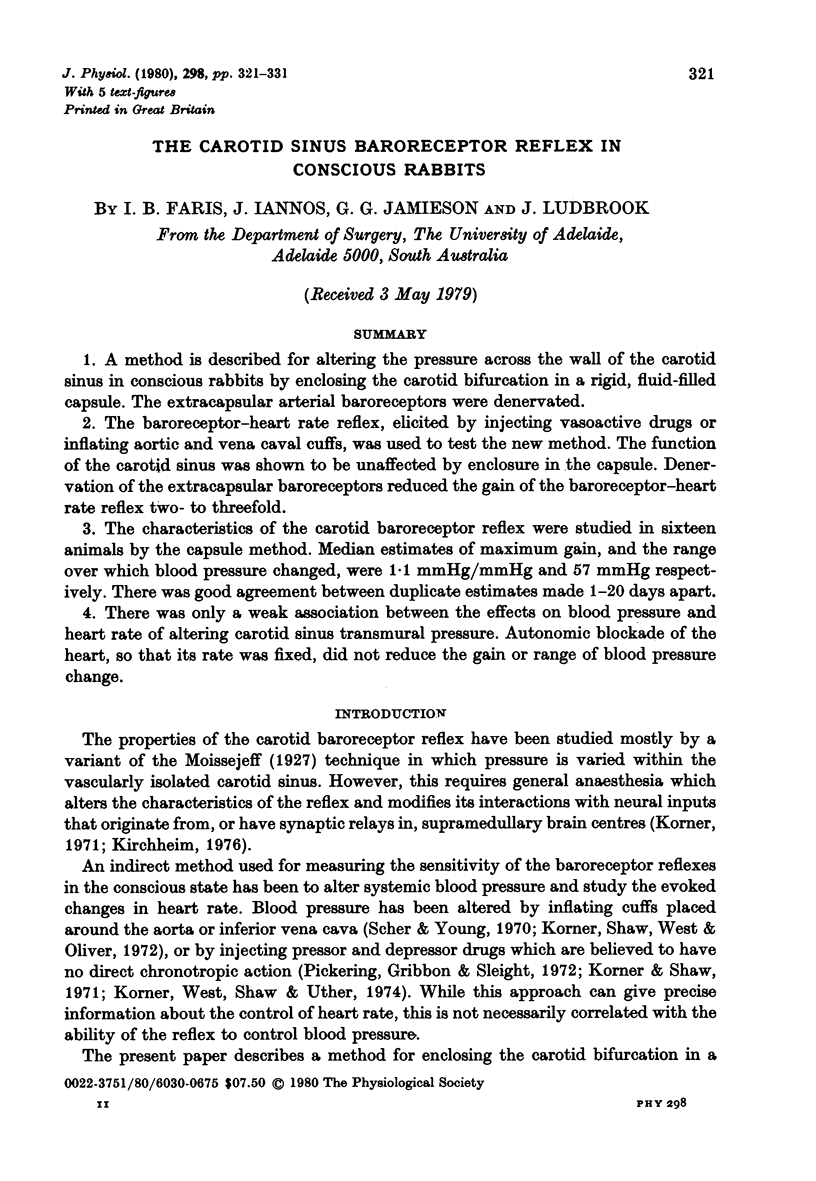
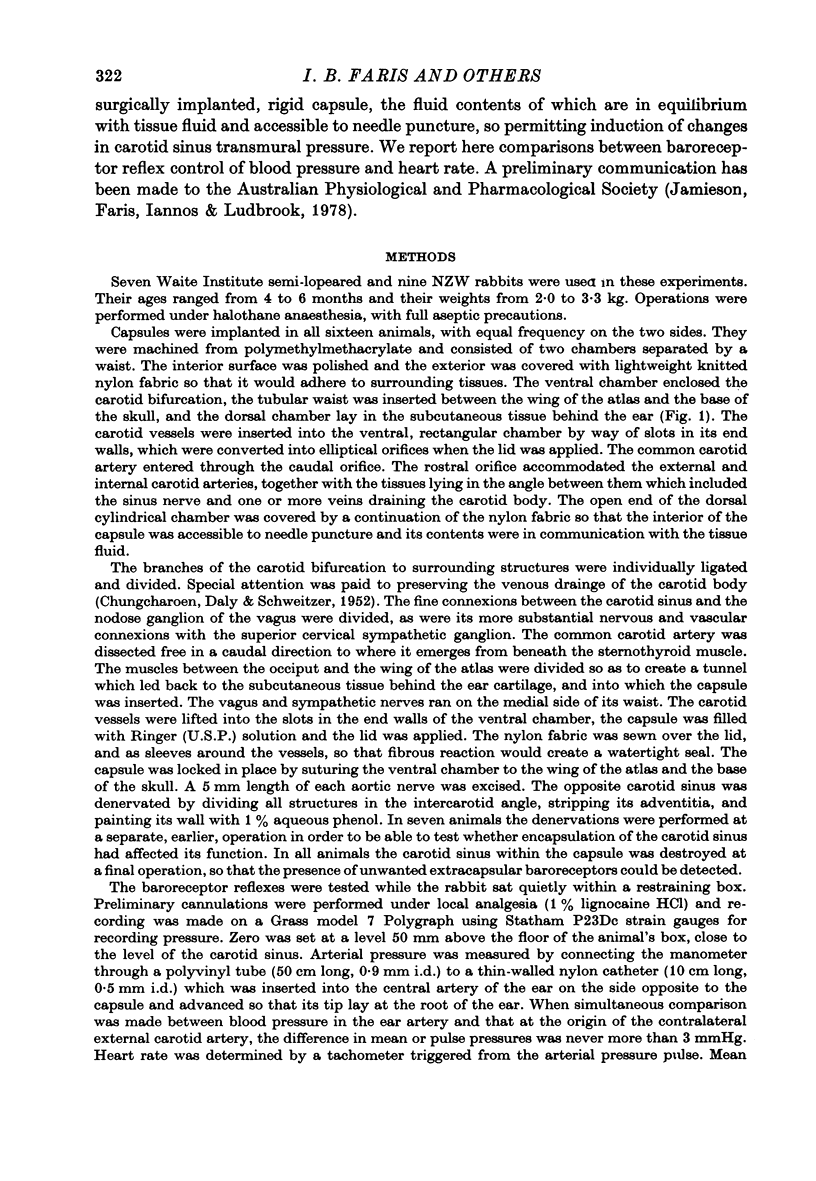
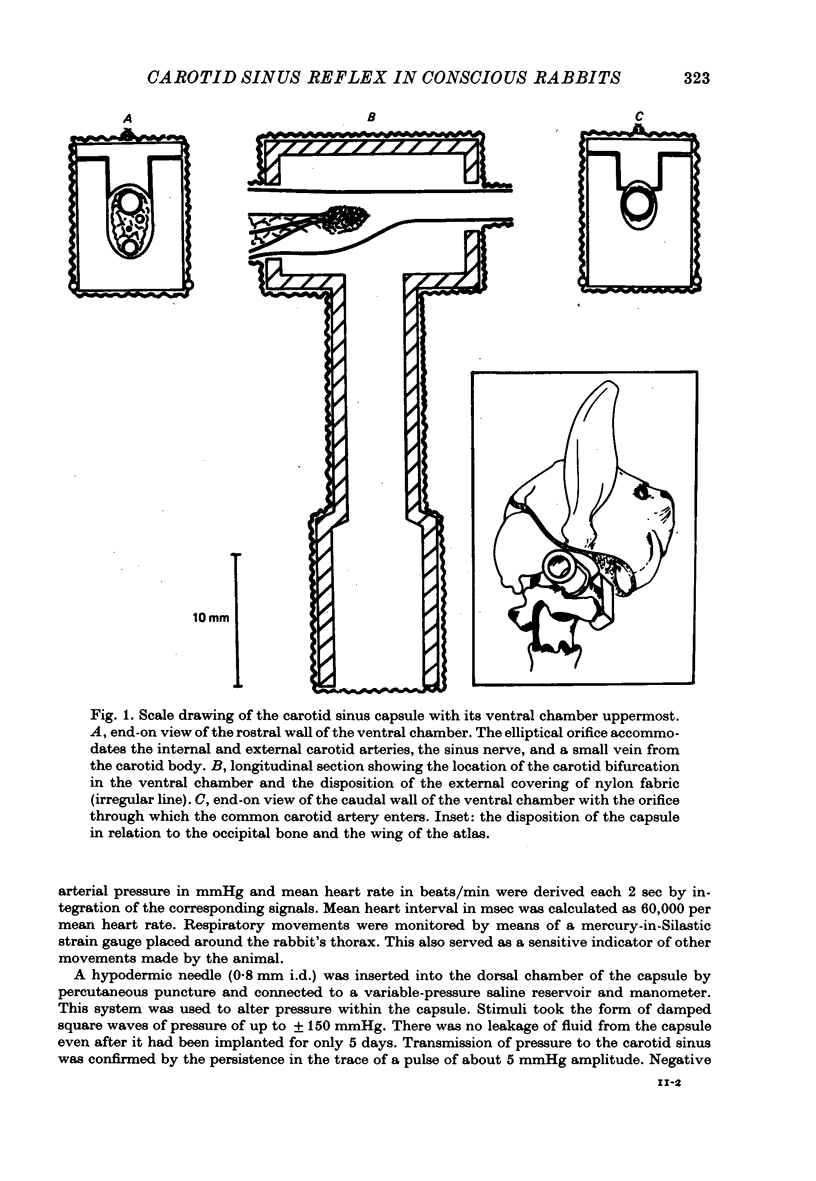
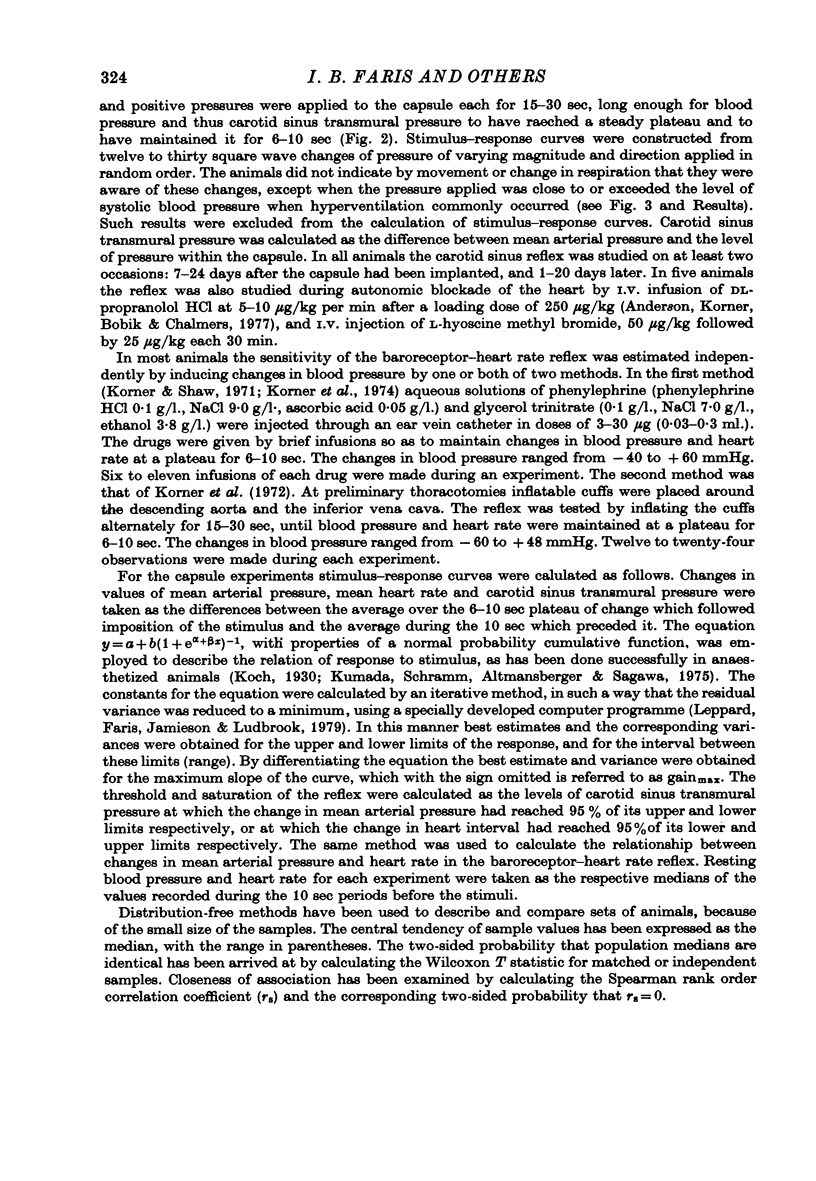
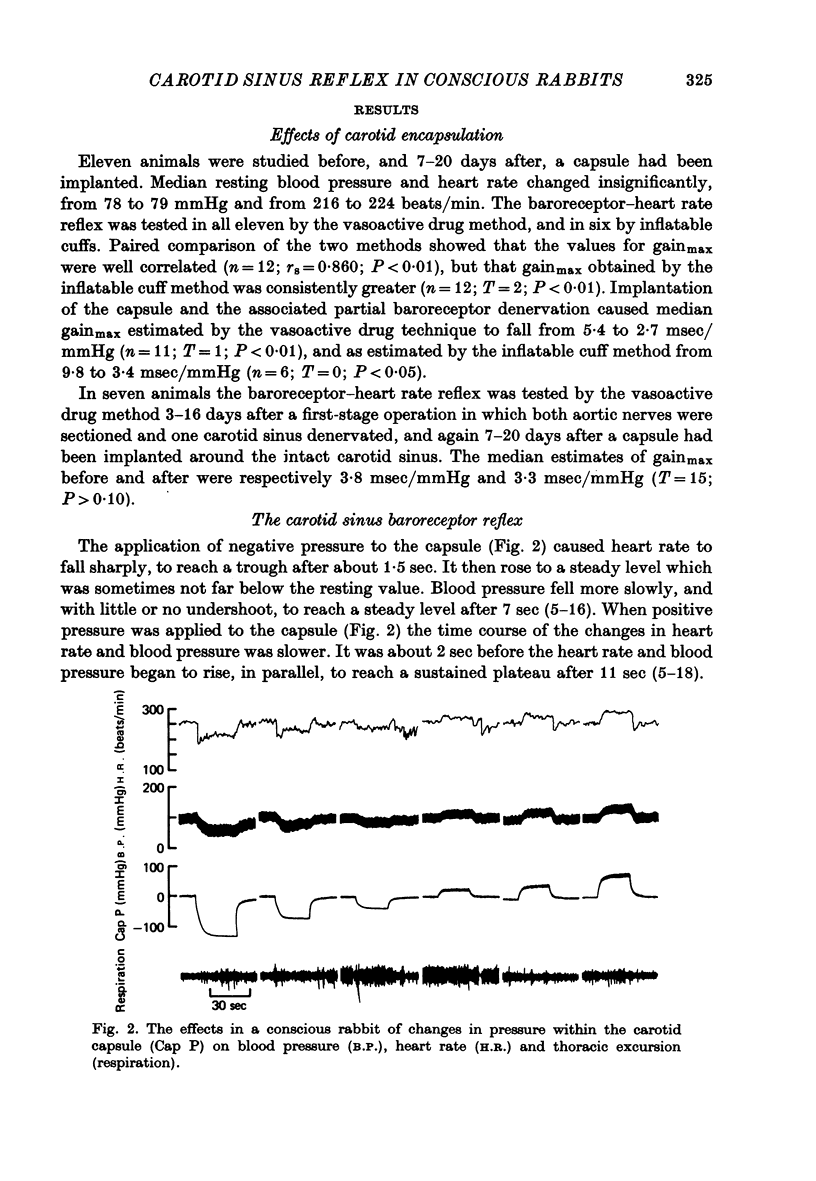
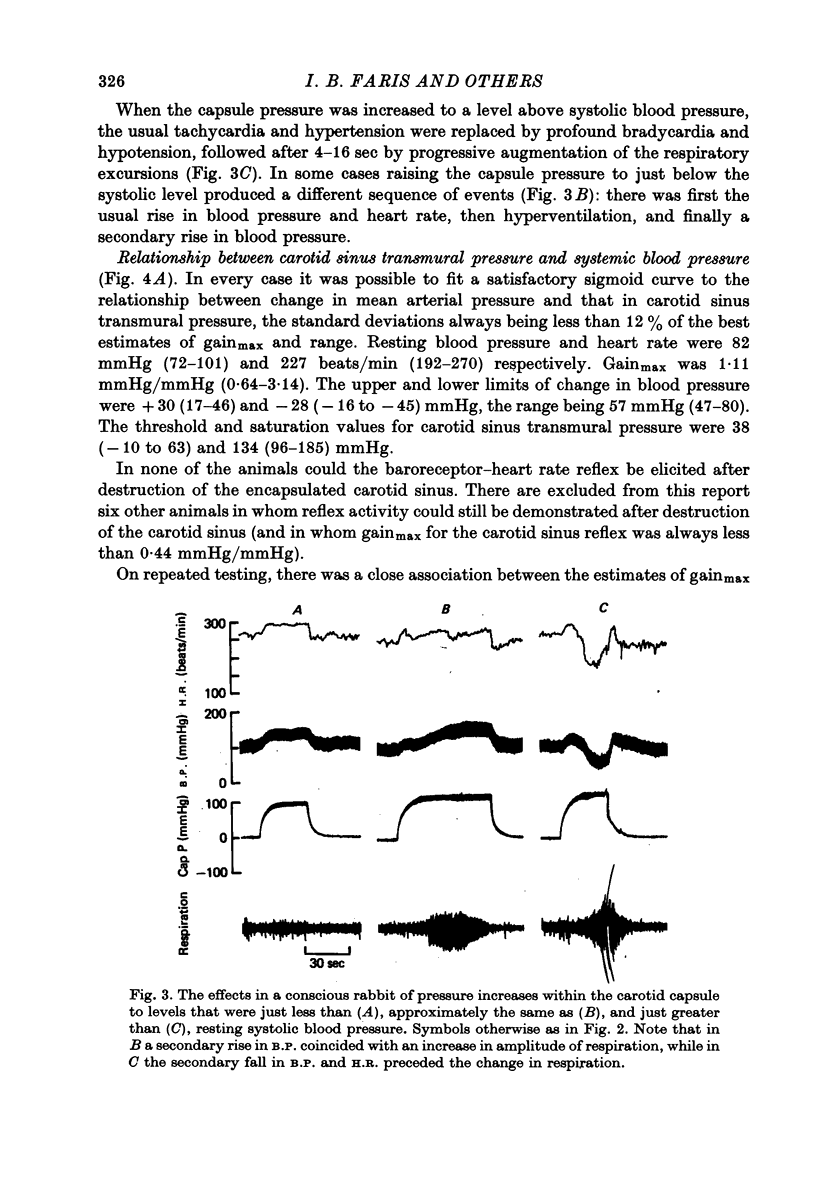
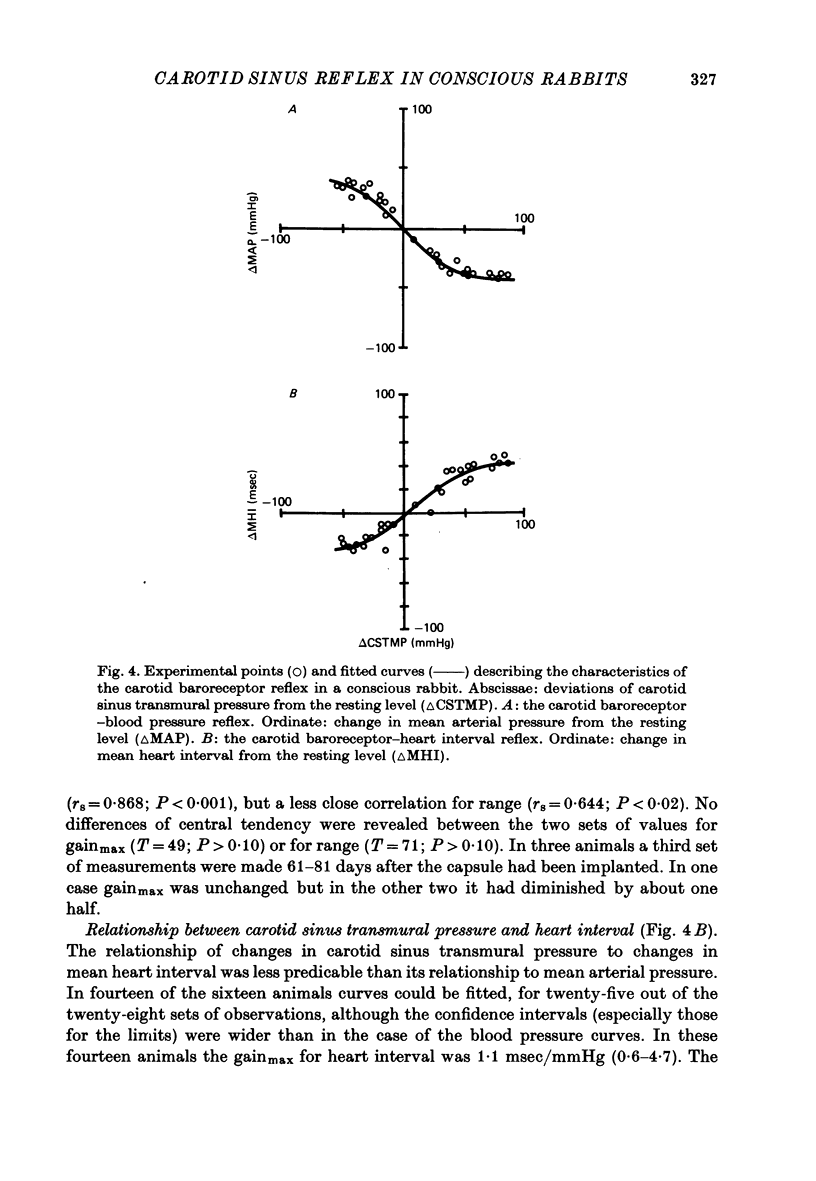
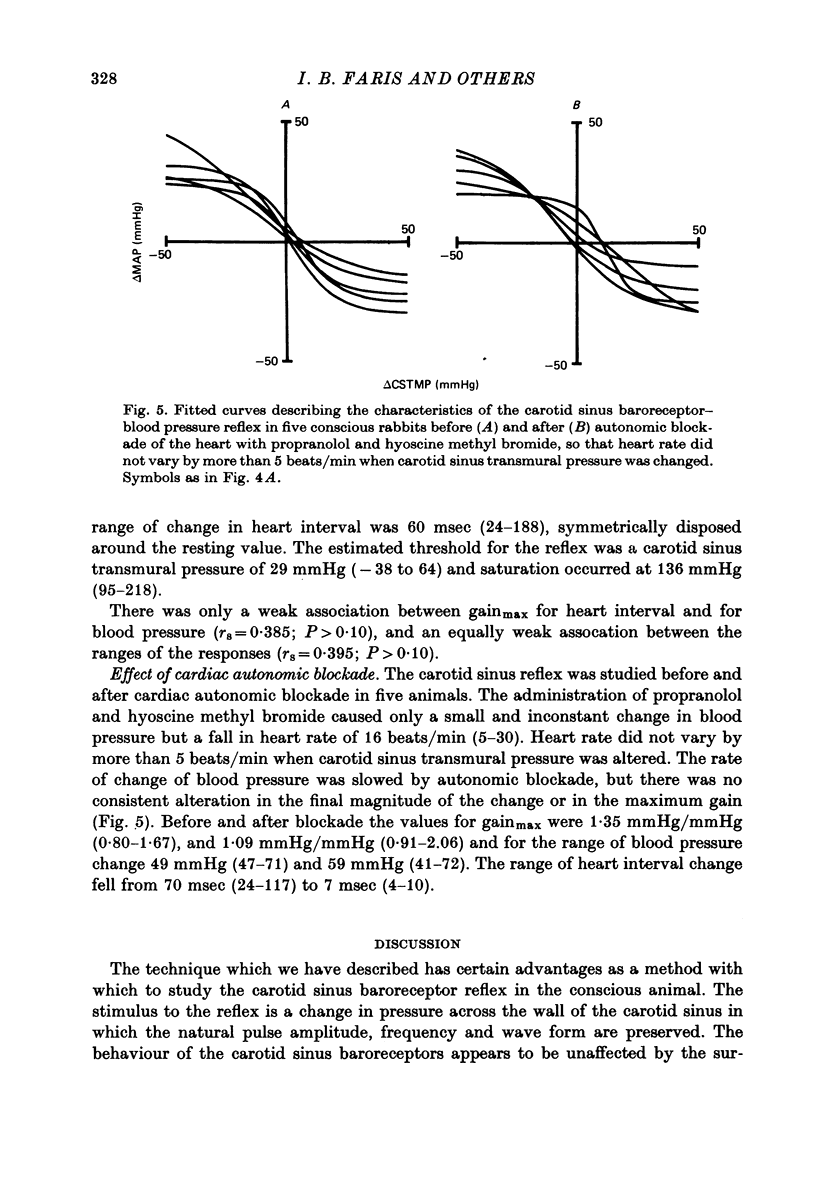
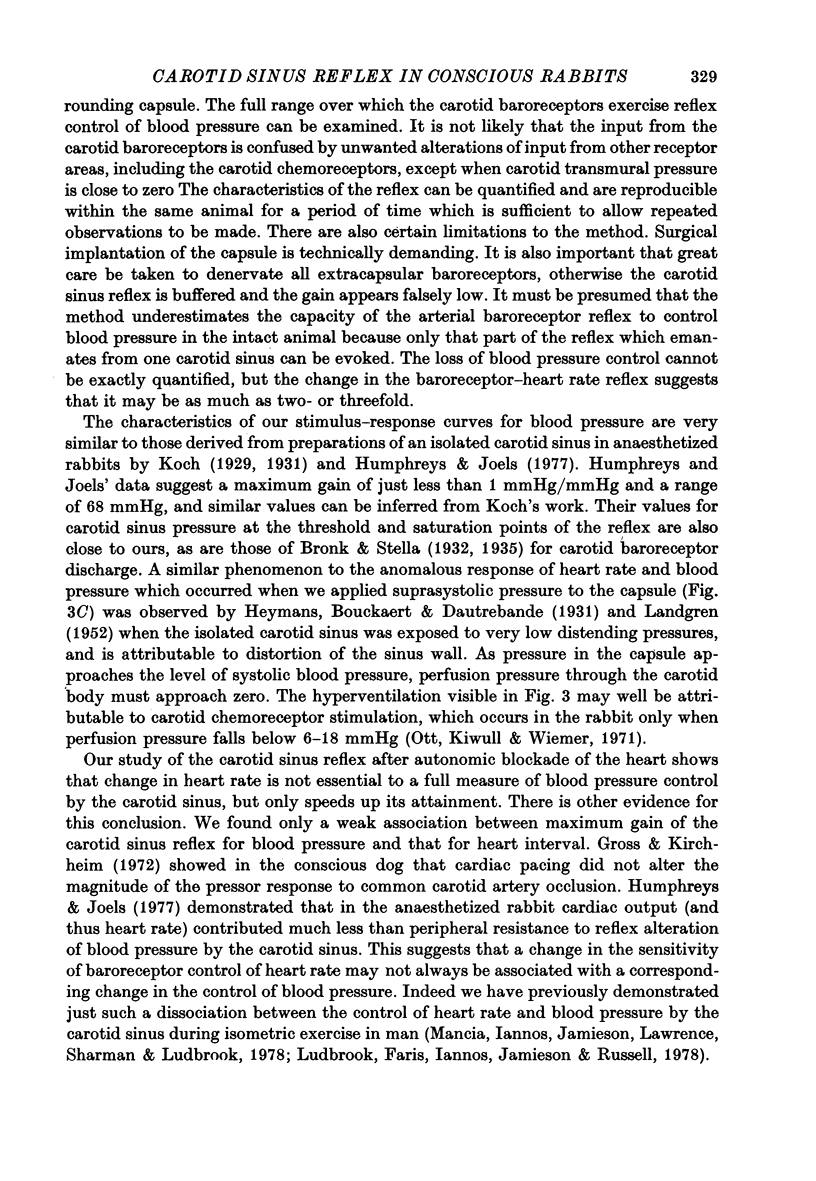
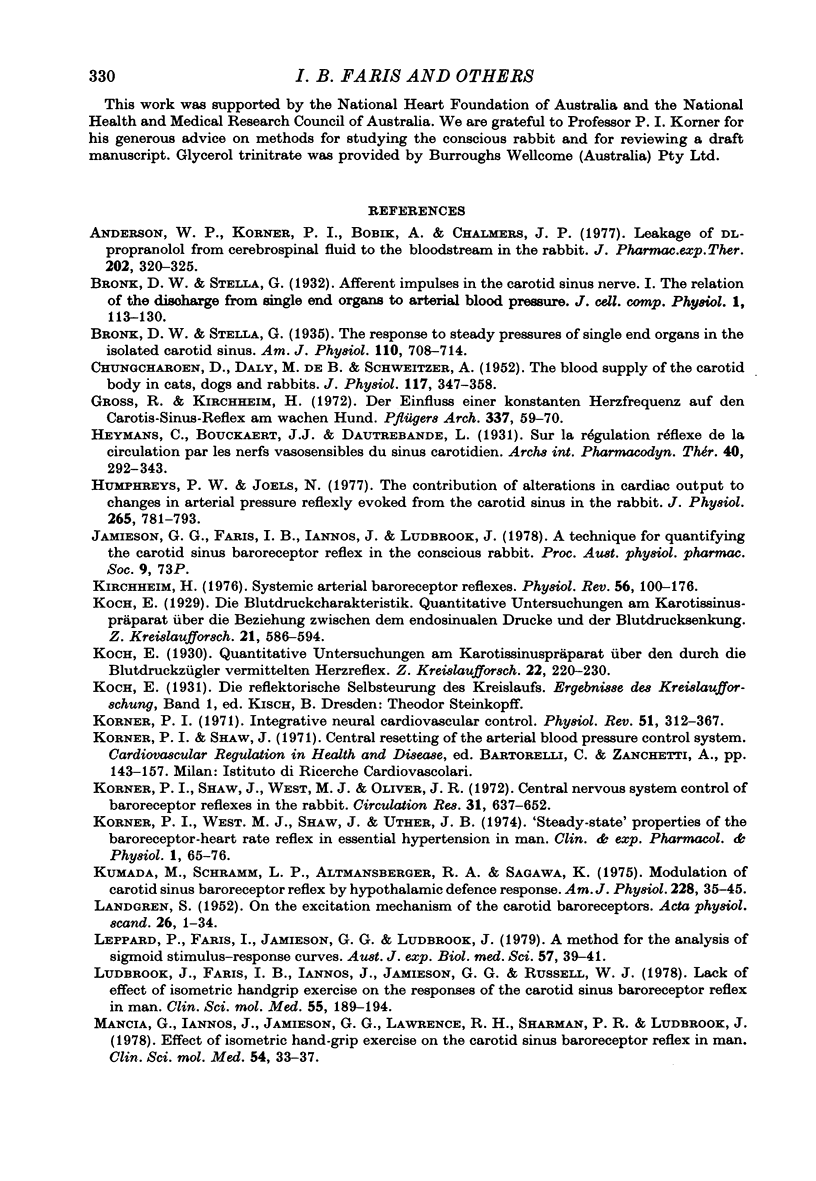
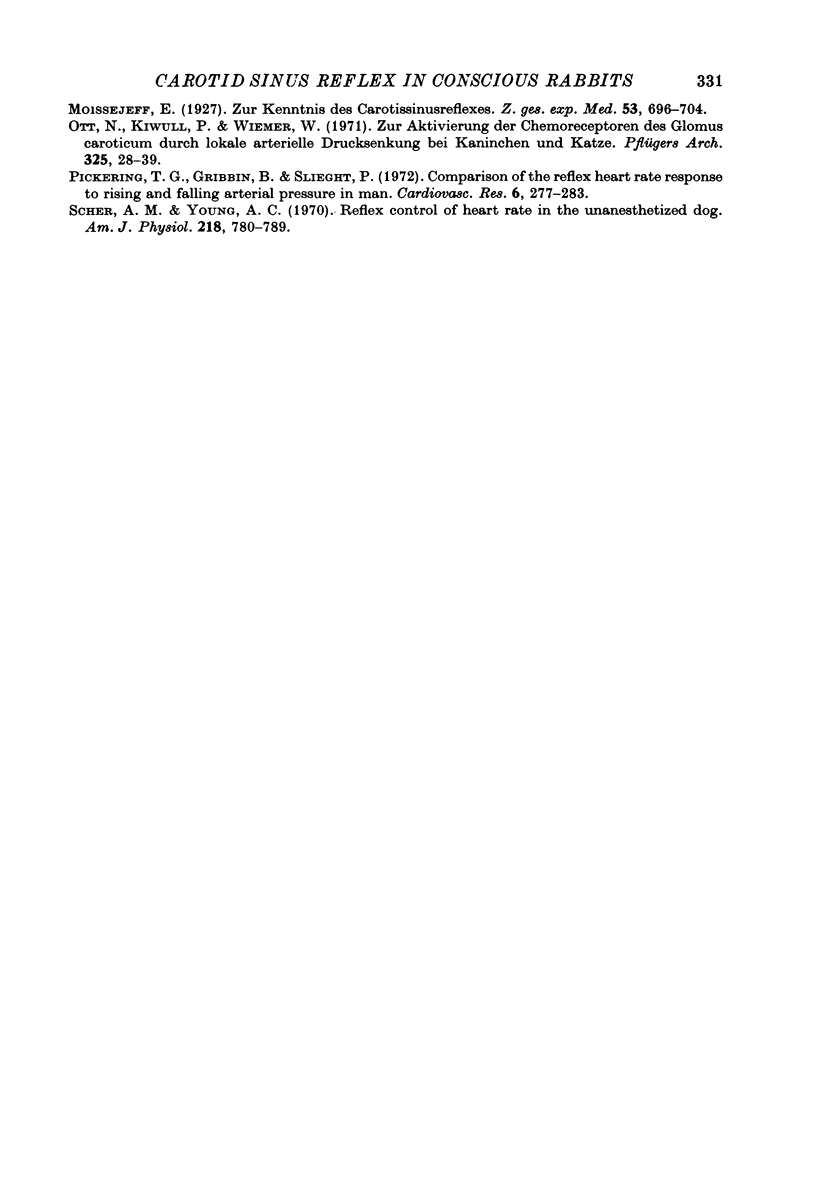
Selected References
These references are in PubMed. This may not be the complete list of references from this article.
- Anderson W. P., Korner P. I., Bobik A., Chalmers J. P. Leakage of dl-propranolol from cerebrospinal fluid to the bloodstream in the rabbit. J Pharmacol Exp Ther. 1977 Aug;202(2):320–325. [PubMed] [Google Scholar]
- CHUNGCHAROEN D., De BURGH DALY M., SCHWEITZER A. The blood supply of the carotid body in cats, dogs and rabbits. J Physiol. 1952 Jul;117(3):347–358. doi: 10.1113/jphysiol.1952.sp004753. [DOI] [PMC free article] [PubMed] [Google Scholar]
- Gross R., Kirchheim H. Der Einfluss einer konstanten Herzfrequenz auf den Carotis-Sinus-Reflex am wachen Hund. Pflugers Arch. 1972;337(1):59–70. doi: 10.1007/BF00587873. [DOI] [PubMed] [Google Scholar]
- Humphreys P. W., Joels N. The contribution of alterations in cardiac output to changes in arterial pressure reflexly evoked from the carotid sinus in the rabbit. J Physiol. 1977 Mar;265(3):781–793. doi: 10.1113/jphysiol.1977.sp011743. [DOI] [PMC free article] [PubMed] [Google Scholar]
- Kirchheim H. R. Systemic arterial baroreceptor reflexes. Physiol Rev. 1976 Jan;56(1):100–177. doi: 10.1152/physrev.1976.56.1.100. [DOI] [PubMed] [Google Scholar]
- Korner P. I. Integrative neural cardiovascular control. Physiol Rev. 1971 Apr;51(2):312–367. doi: 10.1152/physrev.1971.51.2.312. [DOI] [PubMed] [Google Scholar]
- Korner P. I., Shaw J., West M. J., Oliver J. R. Central nervous system control of baroreceptor reflexes in the rabbit. Circ Res. 1972 Nov;31(5):637–652. doi: 10.1161/01.res.31.5.637. [DOI] [PubMed] [Google Scholar]
- Korner P. I., West M. J., Shaw J., Uther J. B. "Steady-state" properties of the baroreceptor-heart rate reflex in essential hypertension in man. Clin Exp Pharmacol Physiol. 1974 Jan-Feb;1(1):65–76. doi: 10.1111/j.1440-1681.1974.tb00528.x. [DOI] [PubMed] [Google Scholar]
- Kumada M., Schramm L. P., Altmansberger R. A., Sagawa K. Modulation of carotid sinus baroreceptor reflex by hypothalamic defense response. Am J Physiol. 1975 Jan;228(1):34–45. doi: 10.1152/ajplegacy.1975.228.1.34. [DOI] [PubMed] [Google Scholar]
- LANDGREN S. On the excitation mechanism of the carotid baroceptors. Acta Physiol Scand. 1952 Jul 17;26(1):1–34. doi: 10.1111/j.1748-1716.1952.tb00889.x. [DOI] [PubMed] [Google Scholar]
- Leppard P., Faris I., Jamieson G. G., Ludbrook J. A method for the analysis of sigmoid stimulus-response curves. Aust J Exp Biol Med Sci. 1979 Feb;57(1):39–41. doi: 10.1038/icb.1979.4. [DOI] [PubMed] [Google Scholar]
- Ludbrook J., Faris I. B., Iannos J., Jamieson G. G., Russell W. J. Lack of effect of isometric handgrip exercise on the responses of the carotid sinus baroreceptor reflex in man. Clin Sci Mol Med. 1978 Aug;55(2):189–194. doi: 10.1042/cs0550189. [DOI] [PubMed] [Google Scholar]
- Mancia G., Iannos J., Jamieson G. G., Lawrence R. H., Sharman P. R., Ludbrook J. Effect of isometric hand-grip exercise on the carotid sinus baroreceptor reflex in man. Clin Sci Mol Med. 1978 Jan;54(1):33–37. doi: 10.1042/cs0540033. [DOI] [PubMed] [Google Scholar]
- Ott N., Kiwull P., Wiemer W. Zur Aktivierung der Chemoreceptoren des Glomus caroticum durch lokale arterielle Drucksenkung bei Kaninchen und Katze. Pflugers Arch. 1971;325(1):28–39. doi: 10.1007/BF00587489. [DOI] [PubMed] [Google Scholar]
- Pickering T. G., Gribbin B., Sleight P. Comparison of the reflex heart rate response to rising and falling arterial pressure in man. Cardiovasc Res. 1972 May;6(3):277–283. doi: 10.1093/cvr/6.3.277. [DOI] [PubMed] [Google Scholar]
- Scher A. M., Young A. C. Reflex control of heart rate in the unanesthetized dog. Am J Physiol. 1970 Mar;218(3):780–789. doi: 10.1152/ajplegacy.1970.218.3.780. [DOI] [PubMed] [Google Scholar]


